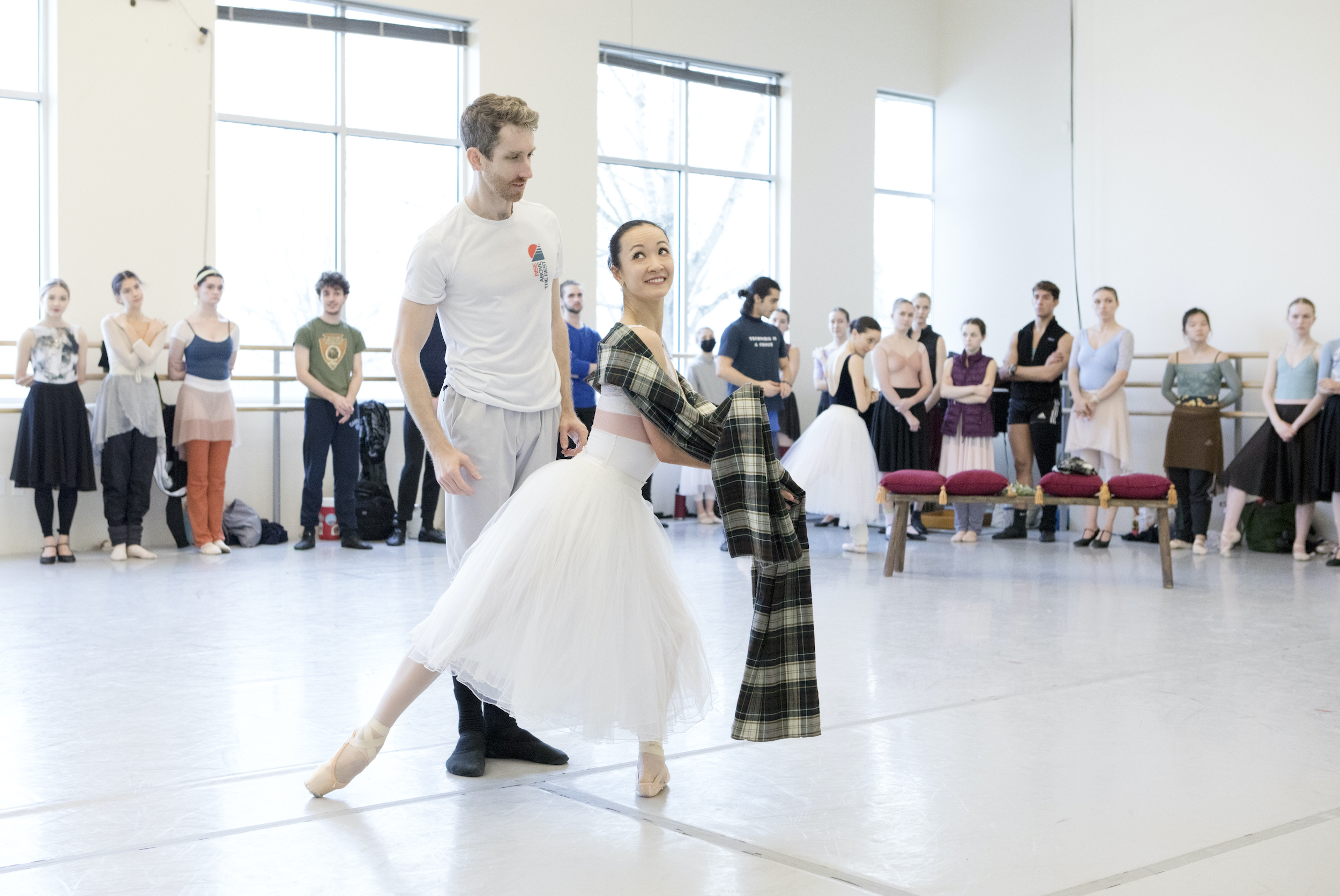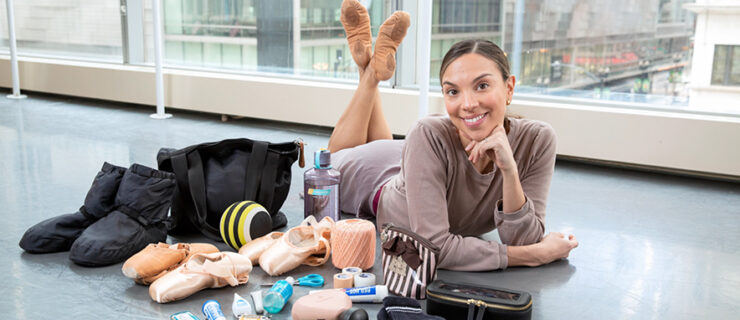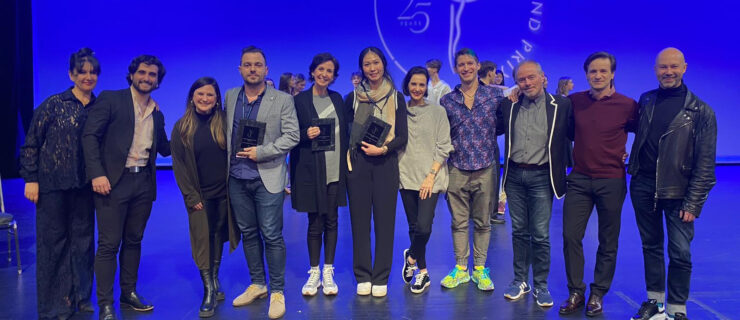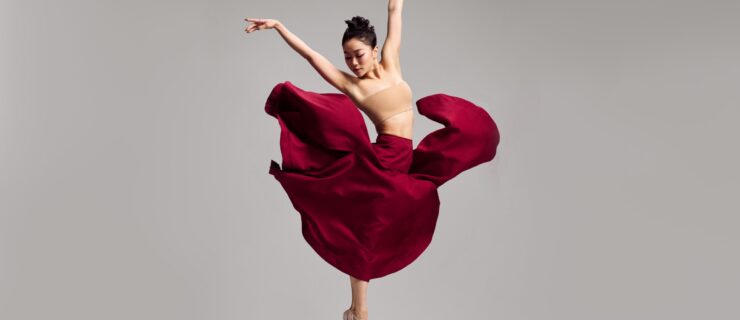Video: Staging Bournonville’s La Sylphide at Oregon Ballet Theatre
“See, understand, react,” Frank Andersen says to Oregon Ballet Theatre principal Charles-Louis Yoshiyama as they work through a scene of Danish choreographer August Bournonville’s 1836 ballet, La Sylphide. He points to the front of the studio, as if to an audience. “Then they will understand.”
The scene in question, in which The Sylph entices James to leave his betrothed on the eve of his wedding to join her in the forest instead, is heavily integrated with mime. Andersen and his team of collaborators, former Royal Danish Ballet dancers Eva Kloborg (his wife) and Anne Marie Vessel Schlüter, are all in their 70s, yet they move amid the three casts of principals with boundless energy. Every detail matters as they adjust fingers, necks and body placement, or show how third-arabesque arms can say either “protect” or “over there,” depending on how it’s done.
Andersen grew up through the Royal Danish Ballet School, graduating into the company at age 16 and eventually rising to principal dancer. He later served as RDB’s artistic director, from 1985 to 1994, and then again from 2002 to 2008. Since then, he and his team have been producing and staging Bournonville ballets all over the world. He’s been a frequent visitor to OBT, first staging the Act III “Tarantella” from Napoli in 2015, then the full ballet in 2018. With each visit, Andersen has been able to immerse the dancers in Bournonville’s distinctive style.
“It’s all little jumps, feet, but then the upper body needs to be calm, simple—and you can’t really use your arms when you jump,” says longtime OBT principal Xuan Cheng in an interview in between rehearsals. “You need control from your core and the back of your legs.”
Cheng, who is dancing The Sylph in what will be her final performance with the company, adds that the Danish répétiteurs’ focus on characterization has made the process particularly special. “They don’t want you to be ‘extra,’ they want you to be real,” she says. “You’re really looking into someone’s eyes, as if you’re really talking to them. You have to believe it and connect to the character.”
In this video exclusive, Andersen takes us inside the rehearsal process, and talks about why Bournonville’s ballets still have relevance today.






